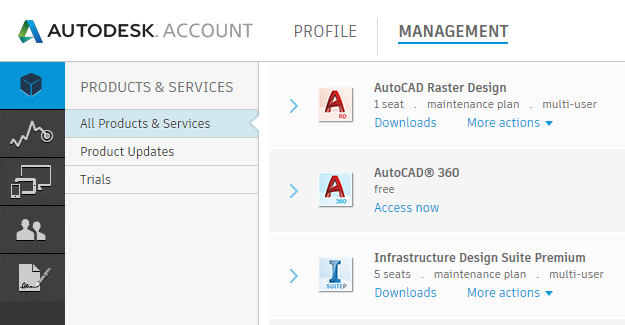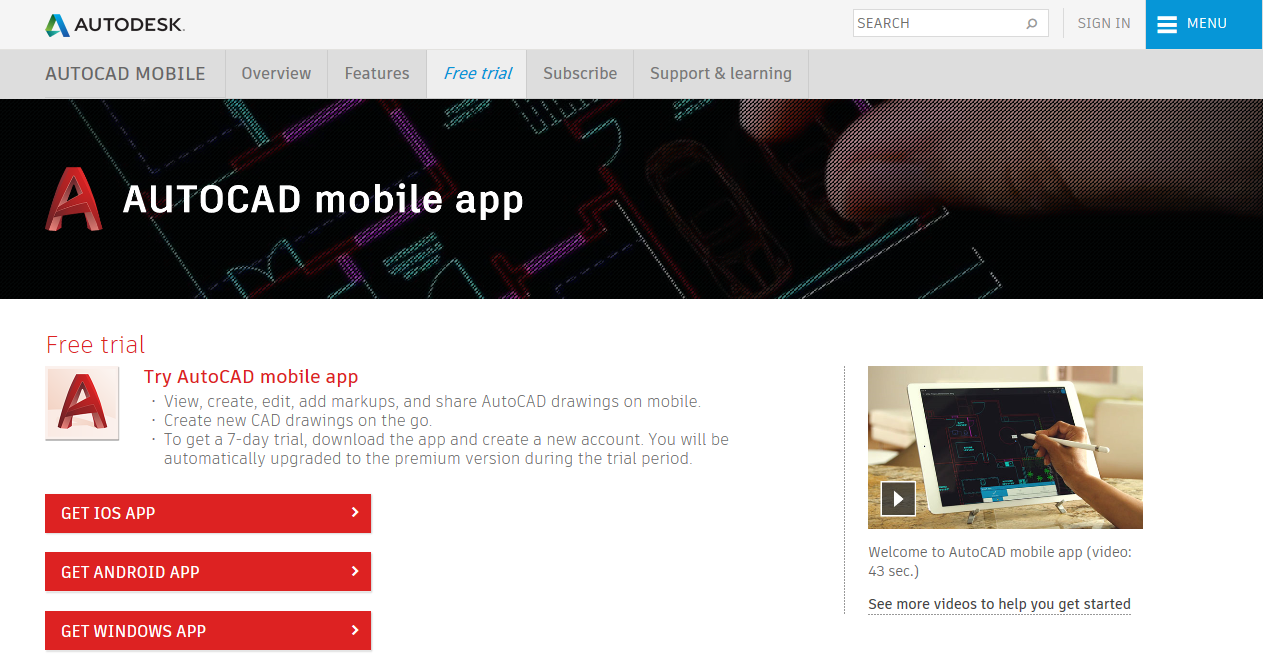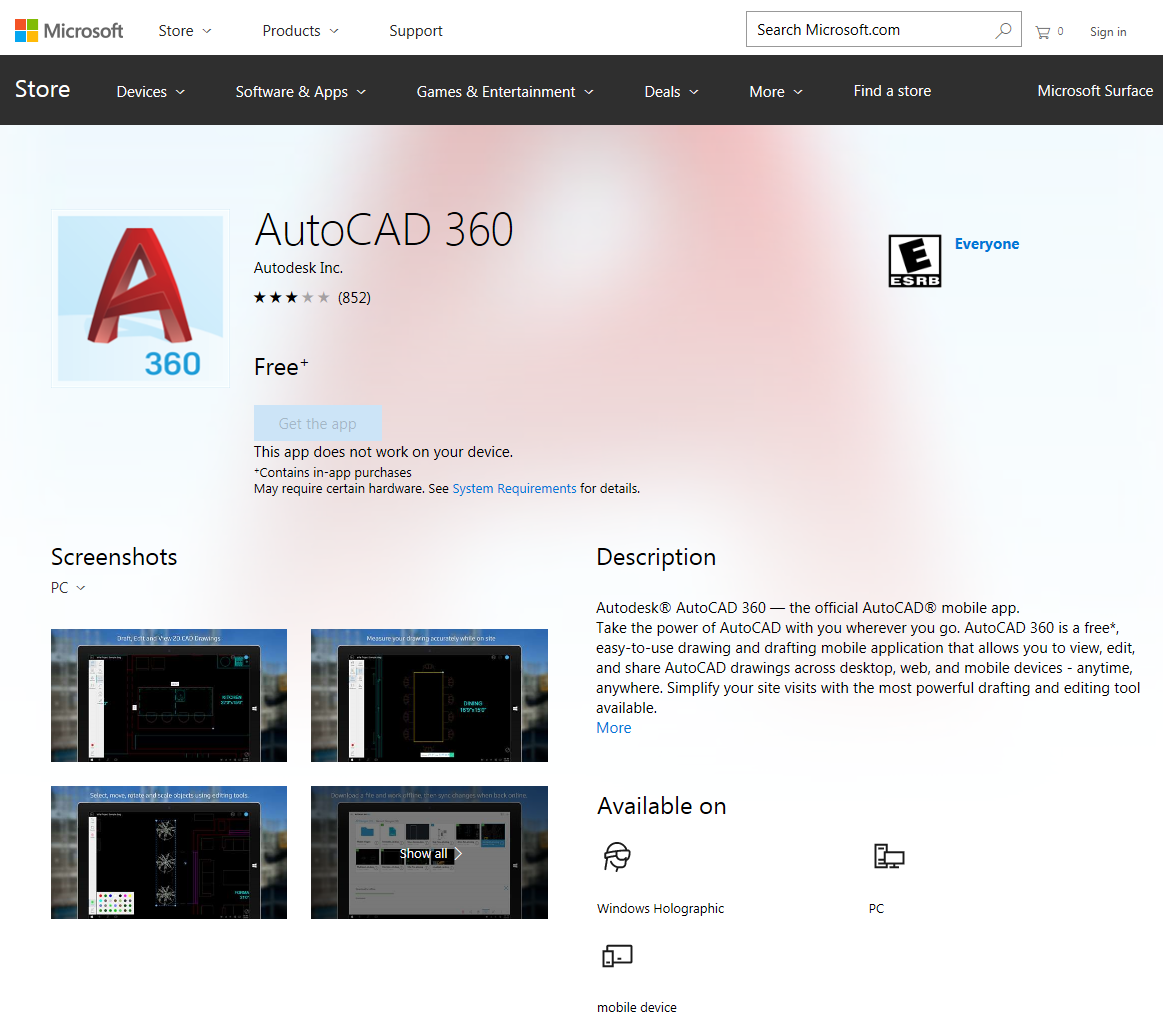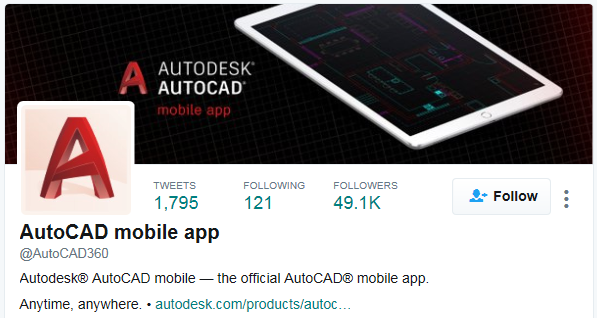This post was originally published on 19 November 2012. What’s happened since then is that Autodesk has indeed ended the sale of perpetual licenses and gone all-rental even though customers remain reluctant.
Autodesk’s cloud push, however, is struggling. Many Autodesk cloud products are dying or dead. Others (mostly free) carry on but many have failed to live up to expectations. Some paid cloud products (e.g. Fusion 360) are starting to generate some return on Autodesk’s huge investment. However, it’s all years behind schedule. We were supposed to be cloudy CAD users several years ago. It hasn’t happened. How much of that is because of technical blockages, how much is because we have problems trusting the cloud, and how much is because we prefer to own our software licenses? I have no way of telling, but I’m sure the latter factor is somewhere in the mix.
Most of this post might as well have been written today. The three Cs matter in 2017 and I believe they always will. Here’s the original, unmodified.
Let’s start with a few questions:
- Do you own your home or rent it? Given the choice, what would you prefer? Why?
- Do you own your car or rent it? Given the choice, what would you prefer? Why?
- Do you own your TV or rent it? Given the choice, what would you prefer? Why?
- Do you own your computer or rent it? Given the choice, what would you prefer? Why?
If you’re like me, you answered the same for most or all of those questions. I own all of the above and rent none of it. I prefer owning all of the above. Why? Three Cs:
- Continuity. If I own my home, there’s a pretty good chance that I’ll be able to go on living in it as long as I like. There are exceptions (wars, natural disasters, etc.), but ownership is generally much safer than renting if it’s important to retain access in the long term. This is because it removes the significant possibility that the owner may eventually terminate the agreement for reasons of their own, or make the relationship financially impractical.
- Control. If I rent my home, for example, there are strict limits on what I can do with it. I can’t just install an air conditioner if the place gets too hot in summer. The owners or their representatives can come calling to make sure I’m looking after it as they desire. If I want to keep pets or smoke in the property, my options are severely limited.
- Cost. There’s a reason people invest in property to rent out to others, or run profitable multinational businesses hiring out cars. It makes sense to be on the side of the relationship that’s taking the money rather than the one that’s paying it out. In other words, it usually makes financial sense to be the owner rather than the renter.
That doesn’t mean renting things never makes sense, of course. I wouldn’t buy a car to drive around while visiting another country, for example. Many people can’t afford to buy their own homes and have no alternative but to rent. But that doesn’t alter the basic point that ownership is the most desirable situation to be in. Let’s look at another situation and see if that point still applies:
- Do you own your music or rent it? Given the choice, what would you prefer? Why?
There are an increasing number of people who feel that owning music is old hat. For example, have a look at Scott Sheppard’s blog post on this subject. Here’s one thing Scott has to say:
When you think about it, you don’t want to own an album or CD, you want to hear the songs when you want to.
Sorry, Scott, but there is more to it than just hearing songs when I want to. I have thought about it, very carefully, and I do want to own an album or CD. I want this for the same reasons I want to own my home, my car and so on.
- Continuity. If I own a CD and look after it, I know I’m going to be able to keep using it indefinitely. I don’t have to worry about whether the rights holder wishes to continue making that music available, or changes the terms of the agreement to my detriment.
- Control. If I own a CD, I can listen to it in good conditions on my home system without the music suffering from lossy compression. I can put it in my car’s player along with a few others and quickly flip to it without having to search for it among several thousand tracks. I can rip the music from the CD and place it on my iPod Nano watch, or Android phone, or computers, and play it when and where it’s convenient. I’m not reliant on any external parties or connections.
- Cost. Once I’ve paid for my CD, the incremental cost of each listen is extremely close to zero. I’m still enjoying music I bought years ago, cost-free. My eldest daughter only listens to music on her iPod, but she generally buys CDs rather than downloading songs from iTunes. She does this because she works out what’s cheapest and it’s usually the CD, even allowing for one or two tracks she doesn’t want.
The cost issue may or may not apply, depending on the album and the service, but for me the other two factors are dealbreakers anyway. Besides, there are other reasons I want to own an album. These include artwork, lyrics, the pleasure that comes from collecting and owning an artist’s works, and so on. I understand that these aspects are down to my personal preference. There are plenty of kids out there who just want to listen to this week’s stuff without thinking about the future too much. However, huge numbers of those sort of people aren’t customers, and don’t enter into the commercial equation. When they download music, they don’t pay for it.
Scott’s experiment with Spotify is hardly a compelling argument for non-ownership. He lists a whole bunch of things that are irritating and which detract from his ability to listen to the music when and where he wants to. Things that don’t apply to those of us who own our music (or those who download it for free). In fact, it’s a very convincing argument that the “anytime, anywhere” mantra needs to be turned on its head. Want to ensure that you’ll be able to listen to the music you want? Anytime, anywhere, uninterrupted, problem-free and independent of external factors? Ownership, not Cloudy stuff. Every time.
With that in mind, let’s look at one more situation:
- Do you own your software or rent it? Given the choice, what would you prefer? Why?
Let’s sidestep the convenient (and court-approved, in some locations) legal idea that customers don’t actually own the software they buy. Let’s interpret the word “software” above as the ability to use the software. This includes whatever is required to do so, from a media, technical and licensing perspective. While you and I might prefer to permanently own our software (or licence to use that software), Autodesk likes to think that society:
is moving from [sic] only requiring access to products instead of owning them
and so it wants to:
move from offering a perpetual license with maintenance to a termed subscription model
In other words, Autodesk doesn’t want you to own software any more, it wants to rent it to you. This desire is clearly the prime mover behind its Cloud push. Never mind that the last time Autodesk tried renting out its software, the experiment was a dismal and short-lived failure because of a lack of customers. This has nothing to do with what you want, it has everything to do with what Autodesk wants.
Is this all OK with you? Do continuity, control and cost really not matter when it comes to software? Are you happy to hand matters over to your friendly vendor and not think about the future too much, like some pop-happy teenager? Or, like me, do you think owning stuff is still important?
Please let me know if you would like to see occasional selected reposts like this in future or would prefer to avoid post necromancy.































